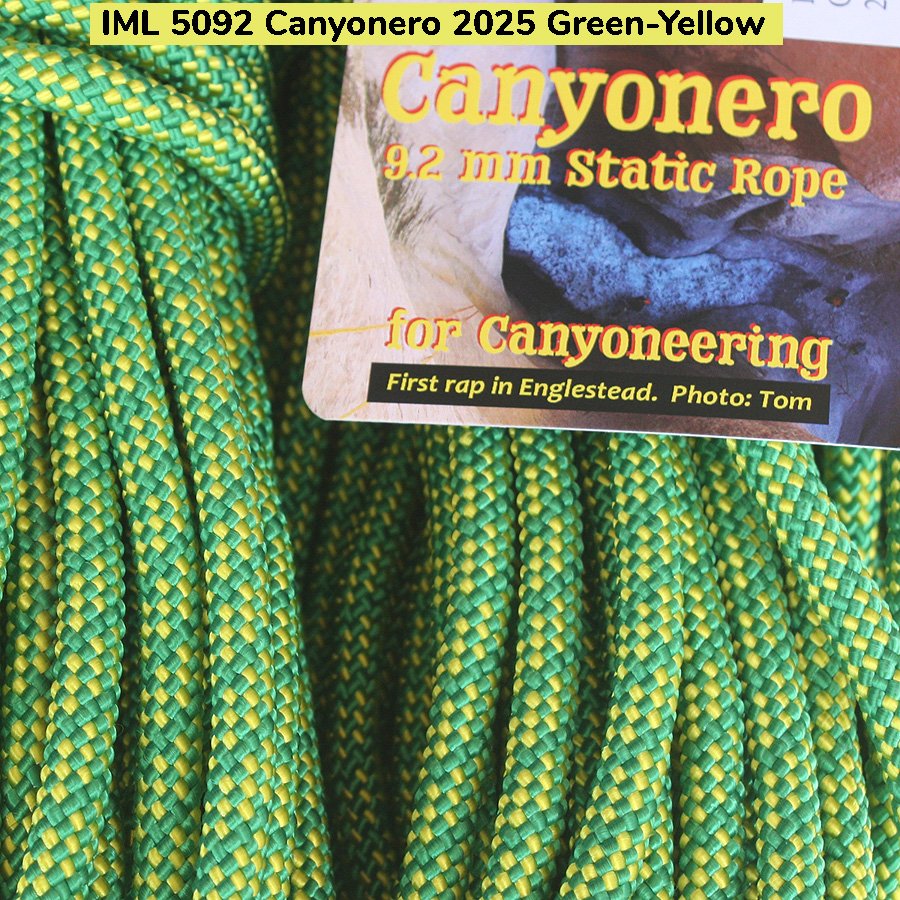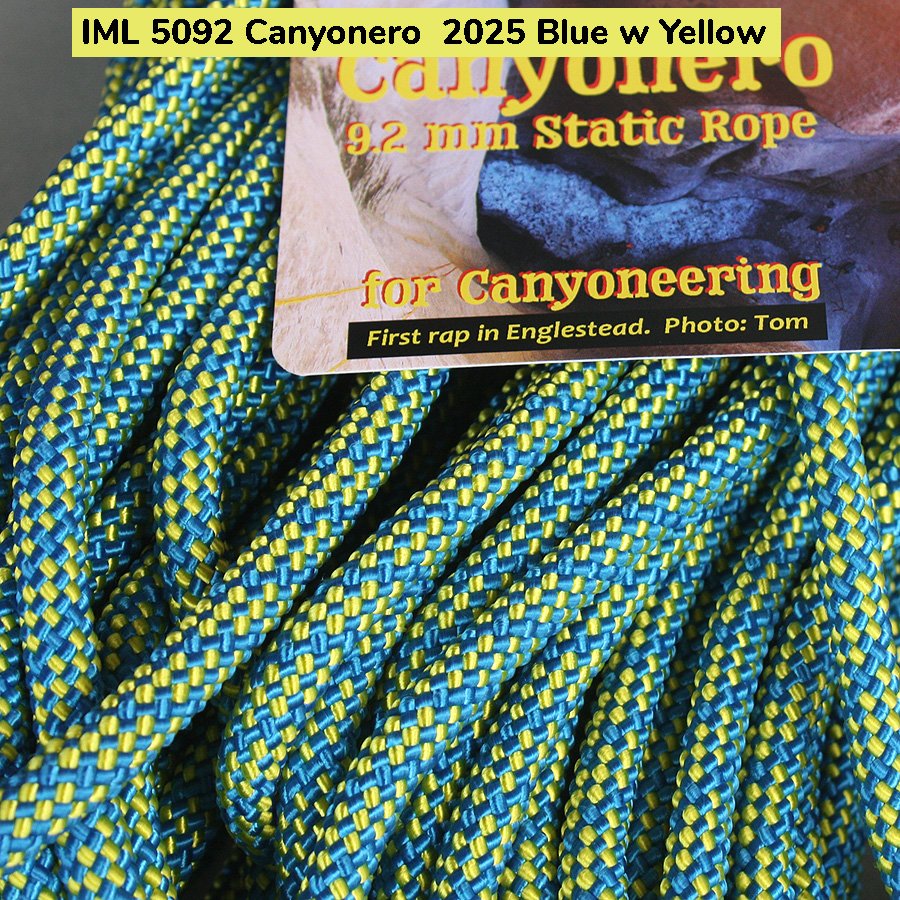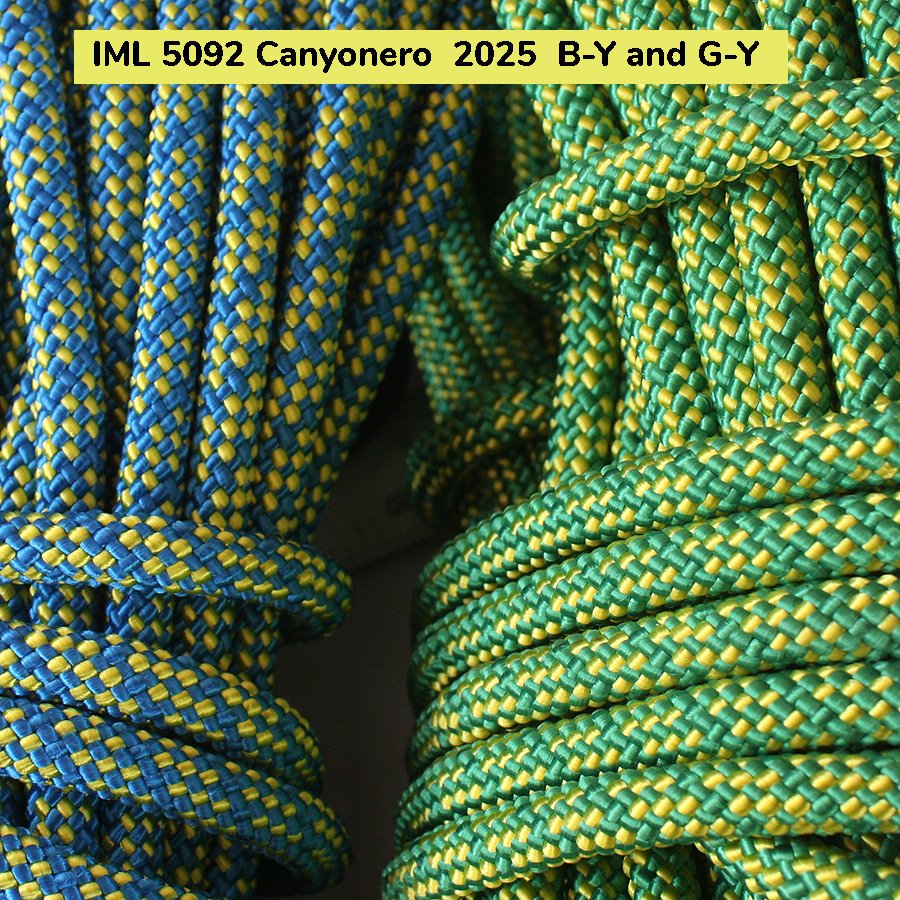Figure Eight on a Bight & Variations
FIGURE EIGHT ON A BIGHT
Among the most useful of knots for canyoneering, the Figure of Eight on a Bight produces a strong loop for clipping into ... something... anything! This can be used for securing a canyoneer near an anchor; for fixing a rope for rappelling; for lowering a pack on another line, etc. While it is shown here NEAR the end of the rope, it can be made anywhere in the rope by just taking a bight, and starting to tie...
Voila! A strong, and easily inspected loop at the end of the rope.
USES:
A strong loop at the end or anywhere in a rope. Clip the Figure Eight on at Bight into an anchor, or make a clipping point on the rope for people, packs, etc.
LIMITATIONS:
In favorable conditions, the Figure Eight on a Bight works well, and can be untied after loading.
Unfavorable conditions could include: if the rope is small, wet or soft; if the knot will be loaded with a heavy load (for instance, in a rescue situation); if the knot will be loaded many times; and if the rope will be left for a considerable time period such as several days. Also, if YOU, personally, are wet, cold or cranky, you might want something that will untie more easily. Several variations to the Figure Eight on a Bight are used for easier untying.
FIGURE NINE ON A BIGHT
USES:
A strong loop at the end or anywhere in a loop; easily untied after loading. Excellent for clipping ropes to anchors.
LIMITATIONS:
Less easily inspected as it does not form as 'nice' a shape. Not as familiar to many people as a Figure Eight on a Bight.
VARIATIONS:
Add one more half-turn, and you get a "Figure-10" knot, etc. As turns are added, the knots become easier to untie, but usually the Figure-9 will be sufficiently untie-able.
"BUNNY EARS" FIGURE EIGHT ON A BIGHT
Another variation that unties easily, though it is a bit more complex to tie, is the "Bunny Ears" Figure Eight on a Bight, less colorfully known as a Double Loop Figure Eight on a Bight.
The finished knot.
Uses:
A strong loop at the end or in the middle of a rope. Easier to untie than a plain Figure Eight on a Bight.
The two loops can be used together, or can be used to clip two different anchors. The lengths of the bunny ears can be easily adjusted to achieve a rough equalization.
Clipping a single ear is discouraged, as many of the advantages of the knot are lost in this configuration. If the knot slips under load (to shorten the unclipped ear), the friction generated could melt the rope in a dangerous manner.

























